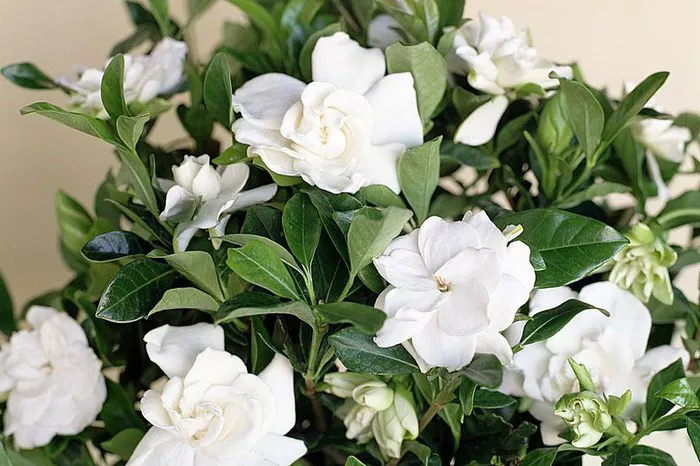Gardenias, with their lush green foliage and fragrant white blossoms, are beloved by many garden enthusiasts. However, coaxing these temperamental plants to bloom can be a challenge for even the most experienced gardeners. Understanding the specific needs of gardenias and providing them with the proper care and conditions are essential for encouraging abundant flowering. In this comprehensive guide, we will explore the various factors that influence gardenia flowering and provide expert tips for maximizing bloom production.
Understanding Gardenia Basics
Before diving into the specifics of encouraging gardenias to flower, it’s important to familiarize yourself with the basic characteristics of these plants. Gardenias belong to the genus Gardenia, which includes over 200 species of flowering plants native to tropical and subtropical regions. The most commonly cultivated species is Gardenia jasminoides, also known as Cape jasmine.
Gardenias are prized for their glossy evergreen leaves and highly fragrant, waxy white flowers. These flowers typically bloom in late spring to early summer and emit a sweet, intoxicating scent that fills the air. However, gardenias can be finicky and require precise growing conditions to thrive and produce flowers.
Factors Influencing Flowering
Several key factors influence the flowering of gardenias, including:
1. Light: Gardenias thrive in bright, indirect light. Insufficient light can result in poor flowering, while excessive sunlight can scorch the leaves. Ideally, gardenias should receive at least 6 to 8 hours of indirect sunlight per day.
2. Temperature: Gardenias prefer moderate temperatures between 65°F and 70°F during the day and slightly cooler temperatures at night. Fluctuations in temperature or exposure to extreme heat or cold can stress the plants and inhibit flowering.
3. Humidity: Gardenias require high humidity to flourish. Dry air can cause the buds to drop before they have a chance to bloom. To increase humidity, place the plants on a tray filled with pebbles and water or use a humidifier.
4. Watering: Proper watering is crucial for gardenias, as both overwatering and underwatering can prevent flowering. Keep the soil consistently moist but not waterlogged, allowing the top inch of soil to dry out between waterings.
5. Soil: Gardenias prefer acidic, well-draining soil rich in organic matter. A soil pH between 5.0 and 6.0 is ideal for optimal growth and flowering. Amend the soil with compost or peat moss to improve drainage and acidity.
6. Fertilization: Regular fertilization is essential for promoting healthy growth and flowering in gardenias. Use a balanced, slow-release fertilizer formulated for acid-loving plants, applying it according to the manufacturer’s instructions during the growing season.
7. Pruning: Pruning gardenias can help promote branching and stimulate flower production. Remove any dead or diseased branches, as well as any crowded or crossing stems, to improve air circulation and encourage new growth.
Tips for Encouraging Flowering
Now that we’ve covered the basic factors influencing gardenia flowering, let’s delve into some specific tips for encouraging these finicky plants to bloom:
1. Choose the Right Variety: Some gardenia varieties are more prolific bloomers than others. When selecting gardenia plants for your garden, choose varieties known for their flowering performance, such as ‘Mystery’ or ‘August Beauty.’
2. Provide Adequate Light: Ensure that your gardenias receive sufficient light by placing them in a location with bright, indirect sunlight. If growing gardenias indoors, place them near a south- or west-facing window where they can receive ample natural light.
3. Maintain Consistent Temperature: Avoid exposing gardenias to drastic temperature fluctuations, as this can stress the plants and inhibit flowering. Maintain a consistent temperature range of 65°F to 70°F during the day and slightly cooler temperatures at night.
4. Monitor Humidity Levels: Gardenias require high humidity to thrive and bloom. Monitor humidity levels in your home or garden and take steps to increase humidity if necessary, such as using a humidifier or misting the plants regularly.
5. Water Wisely: Water gardenias consistently to keep the soil evenly moist but not waterlogged. Avoid allowing the soil to dry out completely between waterings, as this can cause stress and hinder flowering. Use a watering can or hose to water the plants at the base, avoiding wetting the foliage.
6. Feed Regularly: Fertilize gardenias regularly during the growing season to provide them with the nutrients they need to produce flowers. Use a balanced, slow-release fertilizer formulated for acid-loving plants, applying it according to the manufacturer’s instructions.
7. Prune Appropriately: Pruning gardenias can help promote flowering by removing dead or diseased branches and stimulating new growth. Prune the plants after flowering to shape them and remove any dead or damaged growth.
8. Monitor for Pests and Diseases: Keep an eye out for common gardenia pests and diseases, such as aphids, whiteflies, and powdery mildew, which can damage the plants and inhibit flowering. Treat infestations promptly using organic or chemical controls as needed.
9. Be Patient and Persistent: Encouraging gardenias to bloom can require patience and persistence, especially if you’re dealing with challenging growing conditions. Continue to provide the plants with the care and attention they need, and don’t be discouraged if they don’t flower right away.
Conclusion
By understanding the specific needs of gardenias and providing them with the proper care and conditions, you can encourage these beautiful plants to bloom prolifically in your garden or home. With patience, persistence, and a little bit of know-how, you can unlock the secrets to getting gardenias to flower and enjoy their fragrant blossoms for years to come.


